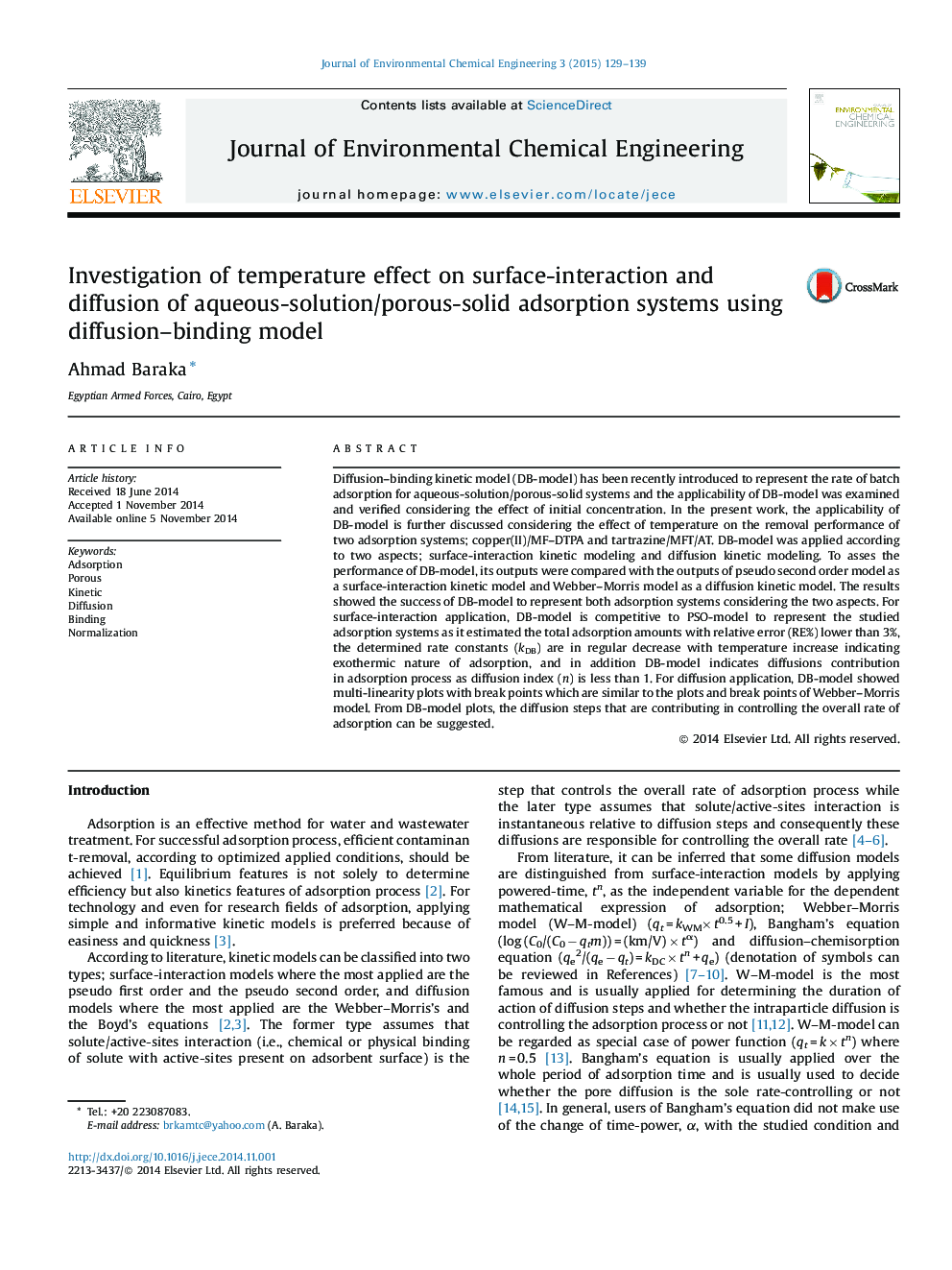| Article ID | Journal | Published Year | Pages | File Type |
|---|---|---|---|---|
| 222392 | Journal of Environmental Chemical Engineering | 2015 | 11 Pages |
Diffusion–binding kinetic model (DB-model) has been recently introduced to represent the rate of batch adsorption for aqueous-solution/porous-solid systems and the applicability of DB-model was examined and verified considering the effect of initial concentration. In the present work, the applicability of DB-model is further discussed considering the effect of temperature on the removal performance of two adsorption systems; copper(II)/MF–DTPA and tartrazine/MFT/AT. DB-model was applied according to two aspects; surface-interaction kinetic modeling and diffusion kinetic modeling. To asses the performance of DB-model, its outputs were compared with the outputs of pseudo second order model as a surface-interaction kinetic model and Webber–Morris model as a diffusion kinetic model. The results showed the success of DB-model to represent both adsorption systems considering the two aspects. For surface-interaction application, DB-model is competitive to PSO-model to represent the studied adsorption systems as it estimated the total adsorption amounts with relative error (RE%) lower than 3%, the determined rate constants (kDB) are in regular decrease with temperature increase indicating exothermic nature of adsorption, and in addition DB-model indicates diffusions contribution in adsorption process as diffusion index (n) is less than 1. For diffusion application, DB-model showed multi-linearity plots with break points which are similar to the plots and break points of Webber–Morris model. From DB-model plots, the diffusion steps that are contributing in controlling the overall rate of adsorption can be suggested.
